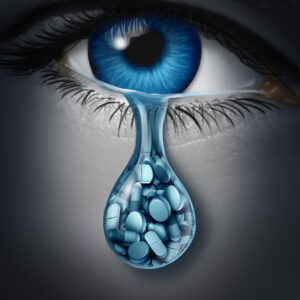Overdiagnosing Depression with the PHQ
According to PsychCentral, in 2020 there were more than 252 million prescriptions prescribed for mental health conditions. The total cost spent on psychiatric medications was more than $15.6 trillion. Zoloft (sertraline) was the most prescribed psychiatric medication with 38.22 million prescriptions, but only made Pfizer $523 million. This is because Pfizer’s patent on Zoloft expired in June of 2006. In its last full year of patent exclusivity, Pfizer’s sales for Zoloft totaled $3.3 billion. And it seems Zoloft’s popularity as an antidepressant can be credited at least in part to the introduction of the Patient Health Questionnaire (PHQ-9), which was developed by Pfizer shortly after Zoloft came on the market.
Writing for Insider, Hilary Bruek said Pfizer was persuaded to invest in the research necessary to develop what became the PHQ-9 by Howard Kroplick, one of their marketers. Kroplick told STAT: “It wouldn’t have happened if it wasn’t for me.” The PHQ-9 became a quick and easy tool that made many primary care doctors more comfortable prescribing antidepressants. Once Pfizer decided to underwrite the development of the PHQ-9, they contracted with Robert Spitzer and his wife Janet Williams, who were central figures in the revisions of the DSM-III.
In September of 2001, Kurt Kroenke, Robert Spitzer and Janet Williams published “The PHQ-9” in the Journal of General Medicine. The authors thought brief measures like the PHQ-9 were more likely to be used in the busy setting of primary care clinical practice. “Brevity coupled with its construct and criterion validity makes the PHQ-9 an attractive, dual-purpose instrument for making diagnoses and assessing severity of depressive disorders.” Note that the creators of the nine item PHQ-9 thought it could be used to diagnose depression. STAT reported the PHQ-9 has become an omnipresent tool, being cited in more than 11,000 scientific papers and routinely used in primary care and other routine visits.
Prescribing antidepressants in primary care based upon a PHQ-9 score of 10 or greater appears to be a sensible medical decision. There have been multiple studies such as Moriarty et al in General Hospital Psychiatry, that find the cutoff point of 10 on the PHQ-9 to have “acceptable diagnostic properties” for major depression. Studies, such as Negeri et al in the BMJ find the PHQ-9 has a combined sensitivity of 85% at the standard cutoff value of ≥10. A referral to a psychiatrist to confirm a depression diagnosis means a delay in treatment, meaning a delay in prescribing an antidepressant. Why not just recommend to the patient that they try a SSRI if their PHQ-9 score is equal to or greater than 10?
Malpass et al noted their concern that self-administered questionnaires like the PHQ-9 were regularly used in clinical practice to guide prescribing or to measure recovery and response to treatment. They thought when patients were given the PHQ-9, they were not interpreting the question items in the same way. They used a research technique called cognitive interviewing to identify ‘interpretive measurement error’ (IME). They found a wide range of comprehension and answer-mapping difficulties on the PHQ-9 that persisted over time.
Clinicians have expressed uncertainty about the PHQ-9’s validity and utility, and in the management and diagnosis of depression within primary care have a strong preference for clinical judgement over scores on severity measures. In light of the numerous ways the PHQ-9 may be missing the presence and/or intensity of certain symptoms that are meaningful to patients, clinicians should continue to adopt caution when using and interpreting questionnaire scores. The study raises the question that longer assessments may be better in providing opportunities for distinguishing frequency and severity.
Writing for Mad in America, Peter Simons commented on a meta-analysis study by researchers in the Journal of Epidemiology that concluded the PHQ-9 did not accurately estimate the prevalence of depression. The researchers concluded that that the PHQ-9 “substantially overestimates depression prevalence. There is too much heterogeneity to correct statistically in individual studies.” Simons said they found it was twice as likely to diagnose depression as the SCID, a semi-structured interview guide for making diagnoses according to the diagnostic criteria published in the DSM. 24.6% of participants in the study were found to be depressed by the PHQ-9, while only 12.1% met the criteria for depression on the SCID.
In primary care settings doctors will likely consider a positive score of ten or higher (the standard cut-off for depression screening with the PHQ-9) as indicating the presence of depression and consider it good enough to diagnose patients with depression and recommend antidepressant treatment. “This could lead to massive inflation of the estimates of how many people ‘have’ depression in the population.” The PHQ-9 is technically not a diagnostic measure of depression (despite what its creators said), but when it is used that way, the result is overdiagnosis.
Estimates of depression prevalence should be based on validated diagnostic interviews designed for determining case status; users should evaluate published reports of depression prevalence to ensure that they are based on methods intended to classify major depression.
The bottom line is that when screening tools like the PHQ-9 are used alone to assess depression in a person, clinicians are likely to misdiagnose it. And there are additional problems if the misdiagnosed person begins using an antidepressant to “treat” this so-called depression.
The general public widely believes depression is the result of a chemical imbalance, which shapes how people understand their moods. It may also discourage them from discontinuing a prescribed antidepressant medication, potentially leading to lifelong dependence on these drugs. An umbrella study by Moncrieff et al found “there is no convincing evidence that depression is associated with, or caused by, lower serotonin concentrations or activity.” The researchers said most studies did not find evidence of reduced serotonin activity in people with depression when they were compared to people without depression. The chemical imbalance theory of depression is now seen as an urban legend, “never a theory seriously propounded by well-informed psychiatrists,” according to pro-medication psychiatrist Ronald Pies.
Moncrieff and others have also noted there are adverse effects from taking antidepressants. In “Persistent adverse effects of antidepressants, she said we are not clear about the nature of the neurochemical and physiological changes that occur when we take an antidepressant. “We are even less certain about how the body, including the brain, adapts to the long-term presence of these drugs.” We also do not know whether the changes produced by the drugs in the brain return to normal when the drugs are stopped; or if the changes persist.
Moncrieff then pointed to the withdrawal effects with long-term antidepressant use. She said the evidence suggests a picture similar to benzodiazepine withdrawal. There is a range of duration and intensity, where not everyone experiences noticeable or debilitating symptoms, but there are numerous reports of “withdrawal symptoms being severe and protracted.”
Moncrieff also referred to a 2006 article by David Healy and others that associated antidepressants and violence in some individuals. Healy said mechanisms that linked antidepressant treatment (rather than the depression itself) to violent behavior included akathisia, emotional disinhibition, emotional blunting, and manic or psychotic reactions. “There is good evidence that antidepressant treatment can induce problems such as these and a prima facie case that akathisia, emotional blunting, and manic or psychotic reactions might lead to violence.”
A group of researchers from the Nordic Cochrane Center in Denmark, including Peter Gøtzsche, published a meta-analysis in 2016 that confirmed Healy et al’s findings, according to Moncrieff. They found the risk of aggressive behavior doubled with the use of antidepressants. They also said akathisia was under-reported. Although akathisia occurred more often with study participants who used antidepressants, the difference was not significant. While they found no significant differences in mortality or suicidality, “our data confirmed the increased risk of suicide in children and adolescents.”
A 2016 literature review of long-term newer antidepressant use (SSRIs and SNRIs) by Carvalho et al noted over 12 adverse effects from antidepressants, that included weight gain, bleeding, sleep disturbance, diabetes, osteoporosis and others. The findings of this review suggest that long-term treatment with SSRIs and SNRIs “should be avoided if alternative treatments are available.” The authors noted there is a tendency to extend antidepressant treatment for long periods of time, believing that it protects against recurrence. However, that was not true in all cases. “This finding indicates that in patients with chronic recurring MDD, recurrences are difficult to prevent with [antidepressant] use only.”
It seems that the PHQ-9 depression scale has contributed to the overdiagnosis of depression and the overuse of antidepressants. One might even suggest this was exactly what it was developed to do. The PHQ-9 helped Pfizer (and eventually other pharmaceutical drug companies) reach into the untapped market of primary care physicians and gave them a tool they felt comfortable using in order to prescribe antidepressants to their patients. Unfortunately for the PHQ-9, the evidence that antidepressants have limited efficacy and multiple adverse side effects is growing.


